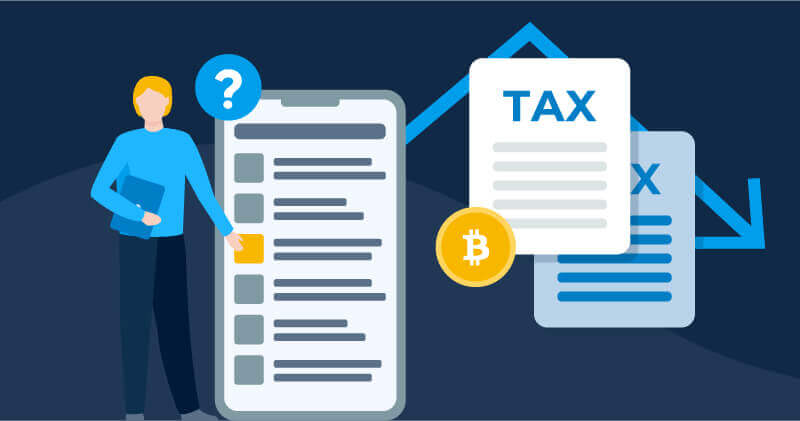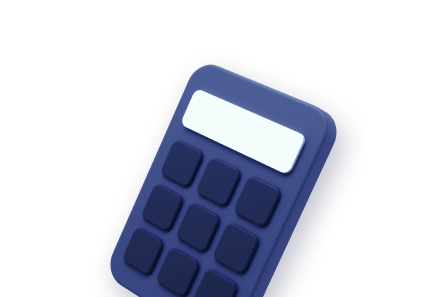

Key Takeaways
- NFT trading cards are unique digital collectibles verified by the blockchain. Some collections are valued in the millions — with their price coming from their rarity and their use in digital games and communities.
- Popular trading collections include VeeFriends, NBA Top Shot, and Gods Unchained.
In recent years, NFT trading cards have emerged as a groundbreaking innovation, blending traditional trading card collecting with the cutting-edge technology of blockchain.
In this guide, we’ll break down everything you need to know about NFT trading cards — including how to get started trading them and an overview of the top NFT trading collections today!
How do NFT trading cards work?

NFT (Non-Fungible Token) trading cards are digital collectibles that use blockchain technology to verify authenticity and ownership. When you buy an NFT trading card, the blockchain verifies you as the owner of the digital asset.
Many investors see NFT trading cards as an investment opportunity — believing some will increase in value over time just like their physical counterparts!
Benefits of NFT trading cards
Let’s walk through some of the benefits of NFT trading cards.
- Digital Ownership: The blockchain records every transaction, verifying the authenticity and history of each card.
- Global Accessibility: NFTs can be bought, sold, and traded globally without the need for physical shipping.
- Interactivity and Engagement: Digital cards can include augmented reality, animations, access to online communities, and interactive features, enhancing the collecting experience.
Physical vs. digital trading cards
Let’s walk through some of the differences between physical and NFT trading cards.
Should I invest in NFT trading cards?

Investing in NFT trading cards can be lucrative but comes with high risk. The market is volatile, and it’s important to remember that not all NFTs will appreciate in value.
Before you get started with NFT trading cards, do your research and remember to never invest more than you can afford to lose.
What are the different types of NFT trading cards?
Collectible/membership trading cards
Collectible NFTs are often traded based on factors like aesthetic value and access to an online community. For example, NFT projects like Bored Ape Yacht Club (BAYC) derive value from both the project’s unique artwork as well as exclusive events that can only be attended by BAYC holders.
Gaming trading cards
Many NFT games use trading cards — just like physical trading card games like Magic: The Gathering or Yu-Gi-Oh. These NFT trading cards are used as items in gameplay and can often be exchanged for cryptocurrency or fiat!
Sports trading cards
Platforms like NBA Top Shot allow you to trade NFT sports cards. Just like physical sports cards, these NFT trading cards can go up and down in value based on the popularity of the depicted player.
How has the NFT trading card collection market shifted?
It’s important to note that the most popular and valuable NFT trading card projects have changed over time.
In 2021, NFT sports cards like NBA Top Shot were some of the most popular and valuable collections in the world. However, as time has passed, sports collections have declined while gaming collections have increased in value.
Remember, NFTs are still in their early days. At this time, it’s difficult to tell what the most popular collections of the future will be.
However, it’s reasonable to assume that the most valuable NFTs will leverage the unique use-cases of NFT trading cards — such as use in online games or access to digital communities.
Notable NFT trading card projects
Let’s walk through 5 notable NFT trading card collections.
Axie Infinity

Axie Infinity is an NFT game that works similarly to Pokemon. In the game, users fight battles using NFT creatures called Axies. Axies can be bred and bought and sold in Axie Infinity’s in-game marketplace.
Today, it’s estimated that Axie Infinity has more than 2 million active users. Currently, Axie Infinity is the most valuable NFT trading card collection by market cap.
Parallel

Parallel is an NFT game with a sci-fi setting that’s been compared to Magic: The Gathering. To play Parallel, players compete against each other using NFT trading cards that are used in the course of gameplay.
At the time of writing, Parallel is the 2nd most valuable NFT trading card collection by market cap.
Gods Unchained

Gods Unchained is a NFT trading card game developed on the Ethereum blockchain. Similar to Parallel, players use NFT trading cards to play the game, earn rewards, and receive new NFT-based trading cards!
Gods Unchained is currently one of the most popular NFT trading card games on the market. At the time of writing, Gods Unchained is the 3rd most valuable NFT trading card collection by market cap.
NBA Top Shot

NBA Top Shot is a NFT trading collection that works similarly to traditional sports trading card collections. However, unlike traditional trading cards, NBA Top Shot ‘moments’ are not static — they instead feature a dynamic highlight from each player.
While NBA Top Shot was once one of the most popular NFT projects in the world during the pandemic, the project has since declined in popularity. For example, a Lebron James ‘moment’ that once sold for more than $230,000 currently has a highest offer of $4,000.
Trump NFTs

Trump NFTs is a collection by Donald Trump, featuring the former president in various poses and attire. Trump collects 10% of the royalties of each NFT sale.
Trump has released several sets of his NFT collection — with the first set having 45,000 NFTs, the second with 47,000 NFTs, and the latest set with 100,000 NFTs! The release of each set led to a crash in value in the previously-released set.
Trump NFTs are available on sites like OpenSea. The collection is notable for having limits on trading that most NFT collections do not. For example, Trump’s mugshot NFTs on the Bitcoin blockchain could not be traded by owners for a year after purchase.
How to Trade NFT Trading Cards
Let’s walk through a 5-step process to help you get started with trading/investing in NFT trading cards.
Step 1: Choosing an NFT Marketplace
The first step to getting started with NFT trading cards is finding a NFT marketplace. Popular options include Blur and OpenSea — which are both known for their wide selection of assets and user-friendly interfaces.
If you’re more interested in NFT games that feature trading cards, you may want to check out the game’s built-in marketplace.
Step 2: Navigating the Marketplace
Once your wallet is connected, take some time to browse the marketplace. Use the platform's navigation tools such as filters, search bars, and categories to sift through NFT trading cards. When you find a NFT trading card you’re interested in, do research to make sure the project has a good reputation!
Step 3: Wallet Integration
Link your digital cryptocurrency wallet with the marketplace of your choice. You can use a wallet like MetaMask to buy, sell, and hold NFTs!
Step 4: Make your transaction
If you find an NFT trading card that interests you, you can make an offer, bid, or buy it outright with cryptocurrency. Some marketplaces also offer the option to trade cards directly with other users, adding another layer of excitement to the process.
Step 5: Own your new trading card!
Once you’ve completed the transaction, you’ll own your NFT trading card. This step empowers you to manage your new NFT in any way you wish — be it holding, displaying, or listing it for sale to others.
How to make NFT trading cards
Let’s walk through a step-by-step guide to creating your own NFT trading cards.
Step 1: Plan your collection: Make a plan for your NFT trading collection. Figure out the theme, look, and what they're all about. Will they be part of a game, an art series, or something totally different?
Step 2: Design your NFTs: Make some eye-catching designs using your favorite graphic design tools or team up with talented artists. Make sure each card stands out with its own style, name, stats, or other special attributes. Remember, great artwork can help you attract collectors!
Step 3: Pick a blockchain: Decide which blockchain you’d like to mint your trading card collection on. You should pick a blockchain with low fees and a vibrant NFT community. While Ethereum is the most popular blockchain for NFTs, Binance Smart Chain and Solana are popular options as well.
Step 4: Get a wallet: To get started minting NFTs, you’ll need a digital wallet like MetaMask or Coinbase Wallet. If you don’t have a wallet already, creating one only takes a few minutes!
Step 5: Start the minting process: Head over to an NFT platform (think OpenSea, Rarible, Mintable) that gets along with your blockchain of choice. Connect your wallet, then follow the platform's minting guide to turn your art into NFTs.
Step 6: Account for fees: Minting isn't free, so you'll need to pay blockchain fees to officially recognize your NFTs. Fees vary for different platforms and different blockchains, so keep an eye on costs.
Step 7: Double-check your collection before minting: Before you mint your NFTs, double check the information to make sure your details, metadata, and attributes are correct. Hit confirm, and voilà, you've minted your very own NFT trading card collection!
Step 8: Hit the market: If you're looking to sell, pop your NFT trading cards onto marketplaces like OpenSea or Blur. Decide on your prices or auction terms, and get ready for the collectors to come calling.
How to display NFT trading cards
Want to display your NFT trading cards to the world? Let’s walk through a few tips to help you get started.
Share on Social Media
Platforms like Twitter and Discord offer tools to verify your NFT and showcase your collection. Sharing your cards on social media platforms can be a great way to spark conversations and engage in relevant communities.
Set Up Your Website
Some NFT traders choose to set up their own website to display their NFTs. Your website can serve as your personal gallery in the digital world, offering a direct line to potential buyers who are interested in your collection.
Step Into Physical Spaces
NFTs can be displayed in the real world! NFT Display tools like Tokenframe allow you to showcase your NFT trading card in your home or in a physical gallery.
How do I keep my NFT trading cards safe?
Unfortunately, some NFT investors have reported losing their assets to hackers. Let’s walk through a few strategies to keep your NFT trading cards safe and secure.
- Avoid suspicious links: Be cautious whenever you click on a link. In the past, hackers have used suspicious links and phishing techniques to steal NFTs and cryptocurrency.
- Research your project: Before you invest in an NFT trading card collection, do your research. Generally, you should avoid projects with undoxxed teams and bad reputations in the NFT community.
- Use a cold storage wallet: Cold wallets like Ledger can be used to hold NFT trading cards. Because your private keys are stored offline, cold wallets are considered the best way to protect against potential hacks.
Conclusion
NFT trading cards represent a dynamic fusion of traditional collecting and digital innovation. Whether you're a seasoned collector or new to the scene, the world of NFT trading cards is filled with opportunity.
Frequently asked questions
- What is an NFT trading card?
NFT trading cards are the digital version of traditional trading cards. Blockchain technology is used to verify authenticity and ownership of each card.
- Are digital trading cards worth anything?
Currently, digital trading card collections like VeeFriends and Parallel are worth millions of dollars in market capitalization!
- Can a Pokemon card be an NFT?
Currently, the Pokemon Company has not developed or released any NFTs. However, other NFT trading card collections like Axie Infinity have been compared to Pokemon.
- Can I buy an NFT with a credit card?
Some marketplaces like NBA Top Shot and OpenSea do allow you to purchase NFTs with a credit card.
How we reviewed this article
All CoinLedger articles go through a rigorous review process before publication. Learn more about the CoinLedger Editorial Process.

CoinLedger has strict sourcing guidelines for our content. Our content is based on direct interviews with tax experts, guidance from tax agencies, and articles from reputable news outlets.






























%20(1).png)





.png)
















